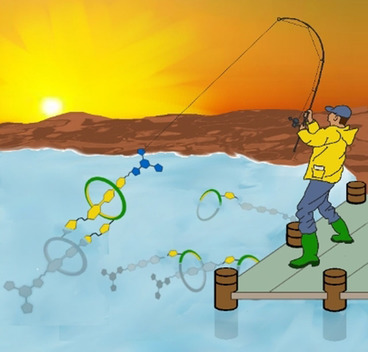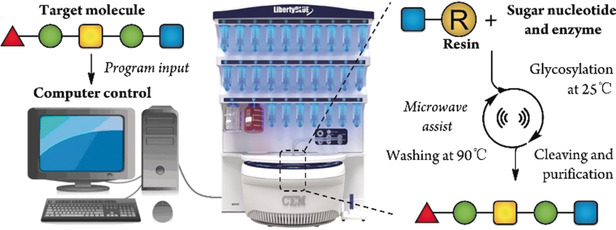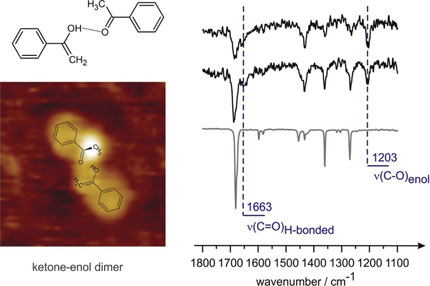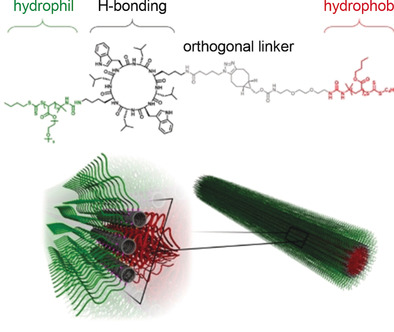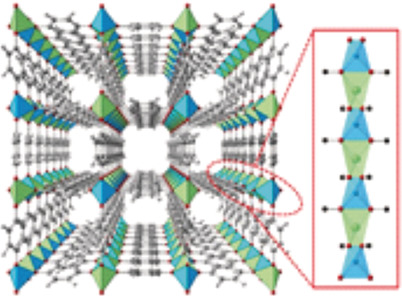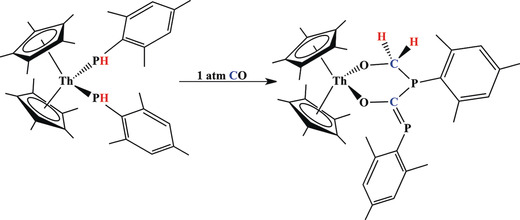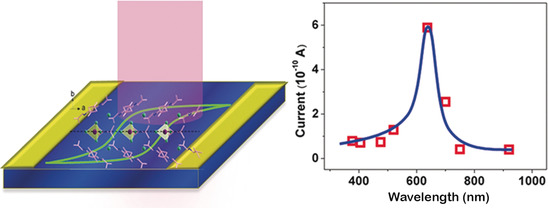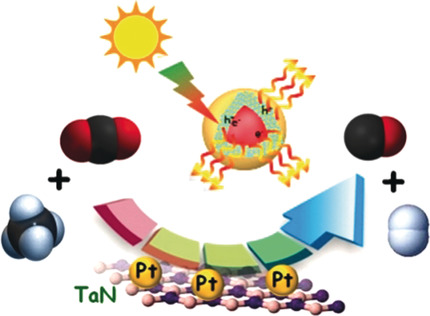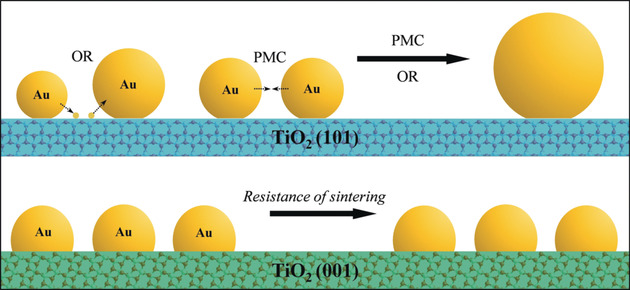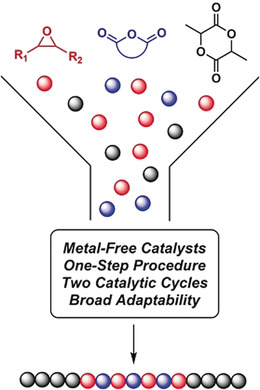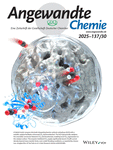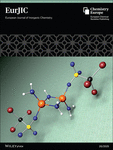Journal list menu
Export Citations
Download PDFs
Cover Pictures
Cover Picture: 2D MoN-VN Heterostructure To Regulate Polysulfides for Highly Efficient Lithium-Sulfur Batteries (Angew. Chem. Int. Ed. 51/2018)
- Page: 16571
- First Published: 14 November 2018
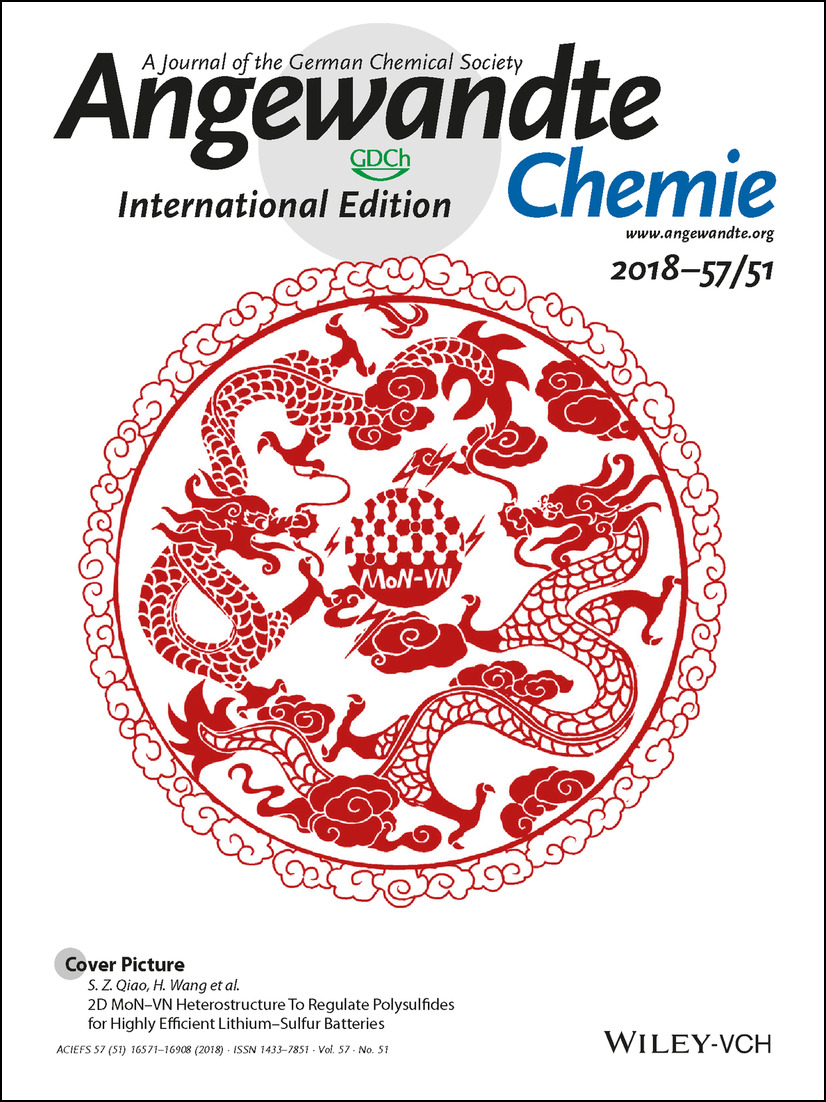
A 2D MoB–VN heterostructure was fabricated as a model sulfur host in lithium–sulfur batteries for improved regulation of polysulfides and sulfur utilization. As demonstrated by H. Wang, S.-Z. Qiao et al. in their Communication on page 16703 ff., superior rate and cycling performance compared with a 2D single-component MoN were achieved. Incorporation of V in the heterostructure can be used to tailor the electronic structure to enhance polysulfide adsorption.
Inside Cover: The Origin of the Reduced Reductive Stability of Ion–Solvent Complexes on Alkali and Alkaline Earth Metal Anodes (Angew. Chem. Int. Ed. 51/2018)
- Page: 16572
- First Published: 22 November 2018
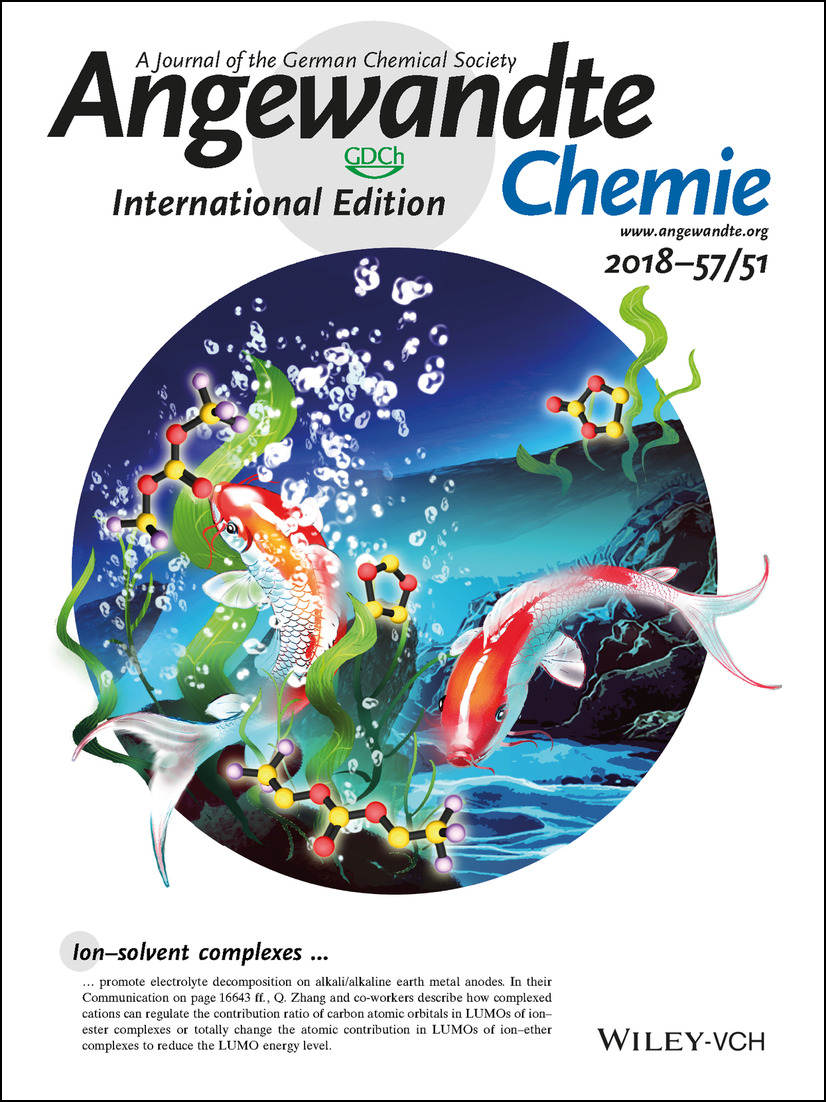
Ion–solvent complexes promote electrolyte decomposition on alkali/alkaline earth metal anodes. In their Communication on page 16643 ff., Q. Zhang and co-workers describe how complexed cations can regulate the contribution ratio of carbon atomic orbitals in LUMOs of ion–ester complexes or totally change the atomic contribution in LUMOs of ion–ether complexes to reduce the LUMO energy level.
Inside Back Cover: Metal-Free Radical Borylation of Alkyl and Aryl Iodides (Angew. Chem. Int. Ed. 51/2018)
- Page: 16907
- First Published: 05 December 2018
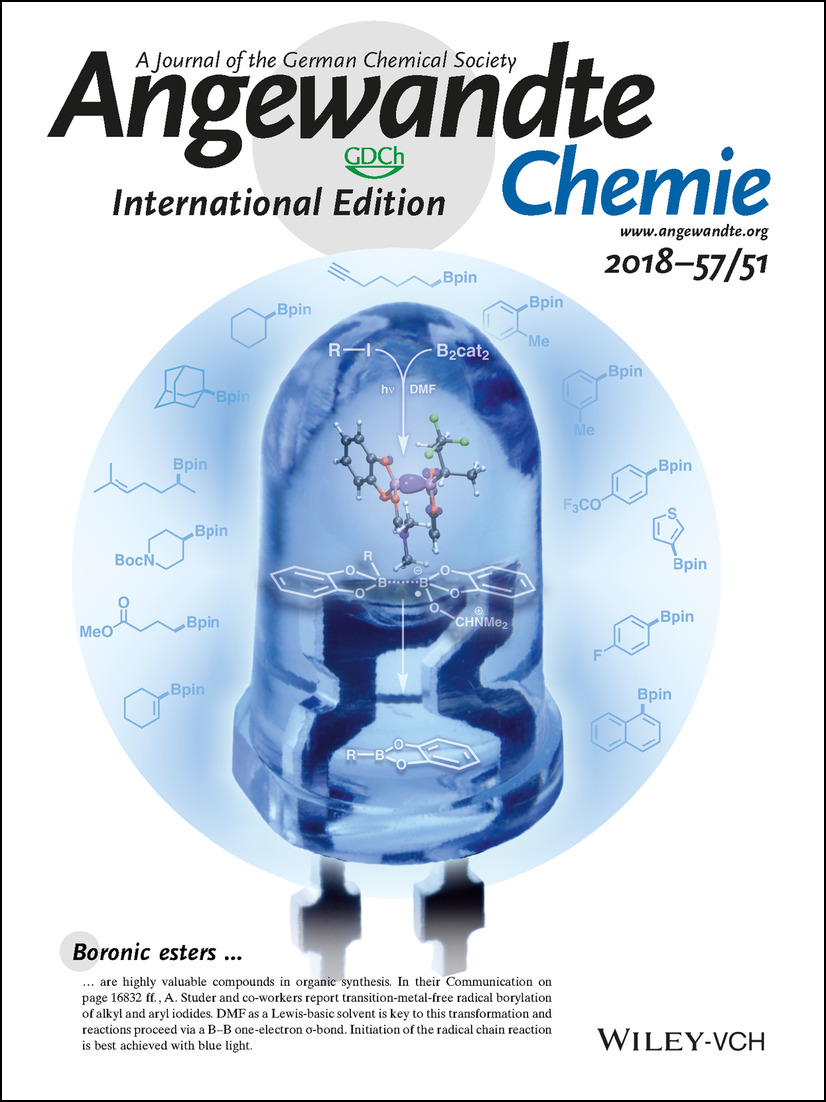
Boronic esters are highly valuable compounds in organic synthesis. In their Communication on page 16832 ff., A. Studer and co-workers report transition-metal-free radical borylation of alkyl and aryl iodides. DMF as a Lewis-basic solvent is key to this transformation and reactions proceed via a B–B one-electron σ-bond. Initiation of the radical chain reaction is best achieved with blue light.
Back Cover: Achieving Atomic Dispersion of Highly Loaded Transition Metals in Small-Pore Zeolite SSZ-13: High-Capacity and High-Efficiency Low-Temperature CO and Passive NOx Adsorbers (Angew. Chem. Int. Ed. 51/2018)
- Page: 16908
- First Published: 30 November 2018

Atomically dispersed palladium in small-pore zeolites is highly effective for simultaneous low-temperature NO and CO abatement. In their Communication on page 16672 ff., J. Szanyi and co-workers report a modified incipient wetness impregnation method for the synthesis of transition-metal-ion-loaded small-pore zeolites. Pd/SSZ-13 with atomic metal dispersion is remarkably efficient for low-temperature NOx and CO storage, allowing its application as a cold-start adsorber in lean-burn exhaust abatement systems.
Frontispiece
Frontispiece: Machine-Driven Enzymatic Oligosaccharide Synthesis by Using a Peptide Synthesizer
- First Published: 11 December 2018

Automated Synthesis In their Communication on page 16638 ff., P. G. Wang, L. Wen et al. present an automated system based on enzymatic glycosylation for oligosaccharide synthesis. The system is implemented using a thermosensitive polymer and a peptide synthesizer.
Guest Editorial
Guest Editorial: Critical Thinking in Education and Research—Why and How?
- Pages: 16574-16575
- First Published: 15 October 2018

“A responsible scientist is able to step back, critically reflect on his or her own doings, and also explain them to a wider audience. Critical thinking includes the ability to talk to people working in other areas, as well as the broader public. It has to be taught to students and fostered at the university level, and should be practiced in relation to one's own work …” Read more in the Guest Editorial.
Graphical Abstract
Graphical Abstract: Angew. Chem. Int. Ed. 51/2018
- Pages: 16577-16593
- First Published: 11 December 2018
Corrigenda
Corrigendum: Cobalt–Nitrogen-Doped Helical Carbonaceous Nanotubes as a Class of Efficient Electrocatalysts for the Oxygen Reduction Reaction
- Page: 16593
- First Published: 11 December 2018
Corrigendum: Promoting Terminal Olefin Metathesis with a Supported Cationic Molybdenum Imido Alkylidene N-Heterocyclic Carbene Catalyst
- Page: 16593
- First Published: 16 November 2018
News
Spotlights on our sister journals: Angew. Chem. Int. Ed. 51/2018
- Pages: 16594-16598
- First Published: 11 December 2018
Author Profile
News
ISA Medal for Science: G. R. Desiraju / Dr. Hermann Schell Fellowship: M. Barz and B. V. K. J. Schmidt
- Page: 16601
- First Published: 12 November 2018
Highlights
Hydroalkenylation
Dual Nickel and Brønsted Acid Catalysis for Hydroalkenylation
- Pages: 16604-16605
- First Published: 15 November 2018

A highly regioselective hydroalkenylation of imines or aldehydes with styrene derivatives was realized by dual catalysis with Ni(cod)2/PCy3 and either TsNH2 or PhB(OH)2. This process provides an atom-, step-, and redox-economic pathway towards synthetically useful allylic amines and alcohols, and opens up a new avenue for the design of more versatile coupling reactions.
Minireviews
Aluminum-Ion Batteries
Graphene: A Cathode Material of Choice for Aluminum-Ion Batteries
- Pages: 16606-16617
- First Published: 22 March 2018
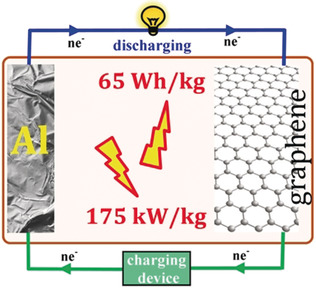
Superpower: The electrochemical coupling of an aluminum anode with a graphene cathode holds extraordinary promise in delivering the much sought after utility demands of ultrahigh power density, ultralong durability, enhanced safety, and flexibility. This Minireview deals with the accomplishments and challenges of Al–graphene batteries.
Reviews
C−H Activation
Activation and Deactivation Strategies Promoted by Medium Effects for Selective Aliphatic C−H Bond Functionalization
- Pages: 16618-16637
- First Published: 06 June 2018

In the medium term: Effects of the reaction medium can be used to alter the reactivity and selectivity in synthetically useful procedures for the functionalization of aliphatic C−H bonds. This Review discusses the mechanistic features in terms of hydrogen bonding and acid–base interactions and shows that these effects can promote aliphatic C−H bond (de)activation toward hydrogen atom transfer reagents.
Communications
Automated Synthesis | Hot Paper
Machine-Driven Enzymatic Oligosaccharide Synthesis by Using a Peptide Synthesizer
- Pages: 16638-16642
- First Published: 29 October 2018
Rechargeable Batteries
The Origin of the Reduced Reductive Stability of Ion–Solvent Complexes on Alkali and Alkaline Earth Metal Anodes
- Pages: 16643-16647
- First Published: 18 October 2018
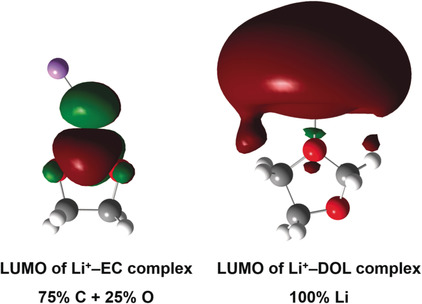
The origin of reduced stability: The reason why ion–solvent complexes promote electrolyte decomposition on alkali/alkaline earth metal anodes is probed. The complexed cations can regulate the contribution ratio of carbon atomic orbitals in LUMOs of ion–ester complexes or totally change the atomic contribution in LUMOs of ion–ether complexes to reduce the energy level of the LUMO.
Photochemistry
Light-Induced Gold-Catalyzed Hiyama Arylation: A Coupling Access to Biarylboronates
- Pages: 16648-16653
- First Published: 09 October 2018

Organoboron compounds are versatile synthetic building blocks. A new strategy, namely a photochemical gold-catalyzed chemoselective Hiyama arylation of B,Si bimetallic reagents with diazonium salts, which is orthogonal to common strategies and therefore a unique tool for synthesis of valuable biarylboronates, has been developed. With this new methodology a wide array of diversely functionalized sp2- and sp3-hybridized biarylboronates were obtained.
Bioinorganic Chemistry
Mechanisms of HNO Reactions with Ferric Heme Proteins
- Pages: 16654-16658
- First Published: 22 October 2018

Breaking down barriers: A computational study of the mechanisms of reactions of HNO with ferric heme proteins revealed that the HNO-binding process is rate-limiting, and reductive nitrosylation occurs by barrierless proton-coupled electron transfer, which provides the major thermodynamic driving force (see scheme). The origin of the difference in reactivity between metmyoglobin and catalase was also uncovered.
Keto–enol Tautomerization
Surface-Driven Keto–Enol Tautomerization: Atomistic Insights into Enol Formation and Stabilization Mechanisms
- Pages: 16659-16664
- First Published: 12 October 2018
Bioimaging
One, Two, Three: A Bioorthogonal Triple Labelling Strategy for Studying the Dynamics of Plant Cell Wall Formation In Vivo
- Pages: 16665-16671
- First Published: 29 October 2018

One, two, three: A triple bioorthogonal labelling strategy was developed to study the incorporation of three distinct monolignol reporters in lignin within plant cell walls. Alkynylfucose was also used in conjunction with monolignol reporters to show that non-cellulosic polysaccharide and lignin deposition can occur contemporaneously in the same cell wall. CuAAC: copper-catalysed alkyne–azide cycloaddition, SPAAC: strain-promoted azide–alkyne cycloaddition, DARinv: Diels–Alder reaction with inverse electronic demand.
Zeolites
Achieving Atomic Dispersion of Highly Loaded Transition Metals in Small-Pore Zeolite SSZ-13: High-Capacity and High-Efficiency Low-Temperature CO and Passive NOx Adsorbers
- Pages: 16672-16677
- First Published: 16 October 2018
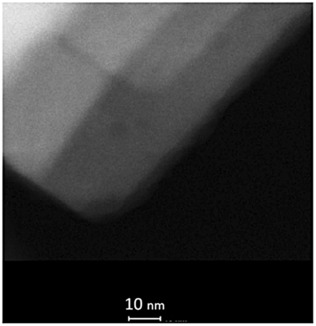
Loaded: The majority of harmful atmospheric CO and NOx emissions are from vehicle exhausts. Both CO and NOx emissions can be simultaneously removed under realistic exhaust flow, using highly loaded (2 wt %) atomically dispersed palladium in the extra-framework positions of a small-pore chabazite zeolite material. To do this, a simple and scalable route to highly loaded Pd and Pt small-pore siliceous zeolites is developed.
Supramolecular Assemblies
Secondary Self-Assembly of Supramolecular Nanotubes into Tubisomes and Their Activity on Cells
- Pages: 16678-16682
- First Published: 01 November 2018
Lithium Ion Conduction
A Metal–Organic Framework with Tetrahedral Aluminate Sites as a Single-Ion Li+ Solid Electrolyte
- Pages: 16683-16687
- First Published: 17 October 2018
Chemical Crosslinking
Rapid Mapping of Protein Interactions Using Tag-Transfer Photocrosslinkers
- Pages: 16688-16692
- First Published: 04 November 2018

Fast, enrichable photocrosslinking: Photocrosslinking reagents with methanethiosulfonate and diazirine functionalities have been developed. After crosslinking and reduction, a thiol tag stays at the interaction site, to be located by mass spectrometry and used for enrichment of even low abundance crosslinks. A UV LED irradiation platform reduces crosslinking times to 10 s.
Oscillating Chemical Reactions
Chemomechanical Motion of a Self-Oscillating Gel in a Protic Ionic Liquid
- Pages: 16693-16697
- First Published: 31 October 2018

An autonomous swelling-deswelling oscillation of polymer gels was achieved in a hydrated protic ionic liquid (PIL) as a proton source for the Belousov–Zhabotinsky (BZ) reaction. The PIL acts as a medium for the BZ reaction and is a promising material for developing self-oscillating gels under milder conditions.
Molecular Wires
Vertical Step-Growth Polymerization Driven by Electrochemical Stimuli from an Electrode
- Pages: 16698-16702
- First Published: 08 October 2018
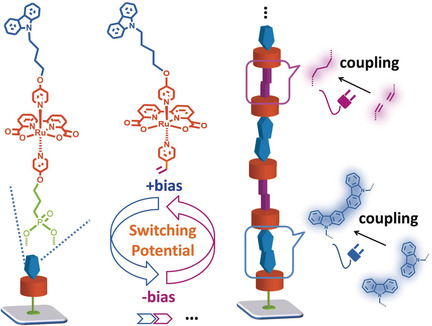
A step up: Vertical step-growth polymerization of a monomer A-B through individual A–A and B–B coupling reactions driven by electrochemically positive and negative bias on a self-assembled A or B electrode enabled the sequence- and topology-controlled synthesis of molecular wires with single-molecule precision (see picture). The resulting surface-confined molecular wires showed fast electron transfer and excellent electrocatalytic performance.
Li-S Batteries | Hot Paper
2D MoN-VN Heterostructure To Regulate Polysulfides for Highly Efficient Lithium-Sulfur Batteries
- Pages: 16703-16707
- First Published: 16 October 2018
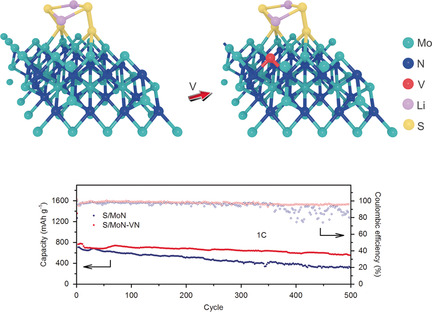
V for victory: A two-dimensional MoN-VN heterostructure is investigated as a model sulfur host. The heterostructure can regulate polysulfides and improve sulfur utilization efficiency, resulting in superior rating and cycling performance. More importantly, incorporation of V in the heterostructure can effectively tailor the electronic structure of MoN, leading to enhanced polysulfides adsorption.
Nanochannels
Bacteriorhodopsin-Inspired Light-Driven Artificial Molecule Motors for Transmembrane Mass Transportation
- Pages: 16708-16712
- First Published: 24 October 2018

Lighting the way: Inspired by the light-driven proton pump bacteriorhodopsin, an artificial light-powered molecular motor was developed by functionalizing synthetic nanochannels with azobenzene derivatives. These nano-confined machines exhibit autonomous selective transport behavior over long distances upon simultaneous irradiation with UV (365 nm) and visible light (430 nm).
Catalysis
Graphene Oxide: Carbocatalyst or Reagent?
- Pages: 16713-16715
- First Published: 19 October 2018

Myths and realities: The archetypal “carbocatalytic” conversion of benzyl alcohol into benzaldehyde was critically studied. Rather than acting as a “carbocatalyst”, graphene oxide (GO) is reduced and a major side product, dibenzyl ether, is also formed. In this transformation, GO underwent extensive loss of oxygen and can be thus reclassified as a reagent.
Multistep Reactions
Digital Control of Multistep Hydrothermal Synthesis by Using 3D Printed Reactionware for the Synthesis of Metal–Organic Frameworks
- Pages: 16716-16720
- First Published: 29 October 2018
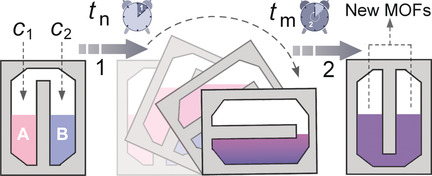
Digital inorganic chemistry: 3D printing enables fabrication of digitally defined and structured hydrothermal reactors which can be used for multistep hydrothermal synthesis. This “reactionware” approach increases the parameter space and kinetic control during a hydrothermal process, allowing preparation of a series of polyoxometalate (POM) containing metal–organic frameworks (MOFs) unavailable by “one-pot” methods.
C−O Bond Activation
Palladium-Catalyzed Decarbonylative Borylation of Carboxylic Acids: Tuning Reaction Selectivity by Computation
- Pages: 16721-16726
- First Published: 24 October 2018
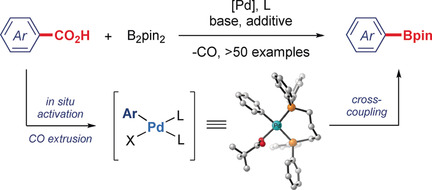
Predicting selectivity: Decarbonylative borylation of carboxylic acids is reported. By circumventing the challenging decarboxylation, this strategy provides a general synthetic platform to access arylpalladium species for a wide array of bond formations from abundant carboxylic acids. Computations illustrate the origin of activation selectivity.
Heterocycle Synthesis
Domino Synthesis of α,β-Unsaturated γ-Lactams by Stereoselective Amination of α-Tertiary Allylic Alcohols
- Pages: 16727-16731
- First Published: 29 October 2018
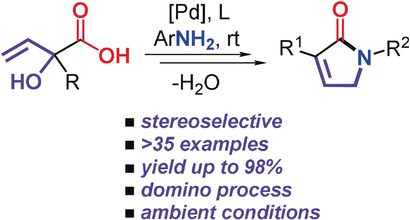
One, two, lactam! A domino synthesis of unsaturated γ-lactams is reported to proceed by a palladium-catalyzed amination of allylic alcohols. An intramolecular carboxyl group acts as a stereodirecting functional group, enabling the formation of Z-configured γ-amino acids and subsequent cyclization to the targeted lactam scaffolds. This procedure is atom-efficient and mild, and highlights a new way of allylic alcohol activation under ambient conditions.
Electrolytes | Hot Paper
The Radical Pathway Based on a Lithium-Metal-Compatible High-Dielectric Electrolyte for Lithium–Sulfur Batteries
- Pages: 16732-16736
- First Published: 29 October 2018
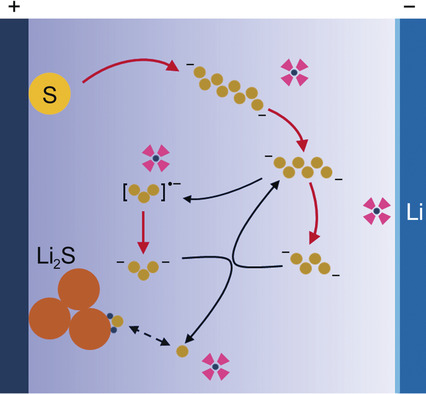
Li−S batteries: A lithium-compatible and strongly polysulfide-solvating high-dielectric electrolyte based on tetramethylurea was proposed to direct a solvation-mediated radical reaction pathway. It enables Li−S pouch cells to deliver an energy density of 324 Wh kg−1. Key: red=electrochemical, black=chemical, dashed=diffusion/precipitation.
Aromaticity
Diazuleno-s-indacene Diradicaloids: Syntheses, Properties, and Local (anti)Aromaticity Shift from Neutral to Dicationic State
- Pages: 16737-16741
- First Published: 12 October 2018

Character building: Derivatives of two diazuleno-s-indacene isomers were synthesized, and they show different diradical character depending on the fusion mode and substituents. They maintain the aromatic character of azulene and anti-aromatic feature of the s-indacene. Upon oxidation to the dication, two aromatic tropylium rings are formed, resulting in a shift of the local (anti)aromaticity.
Imaging Agents
Perfluorocarbon-Based 19F MRI Nanoprobes for In Vivo Multicolor Imaging
- Pages: 16742-16747
- First Published: 30 October 2018
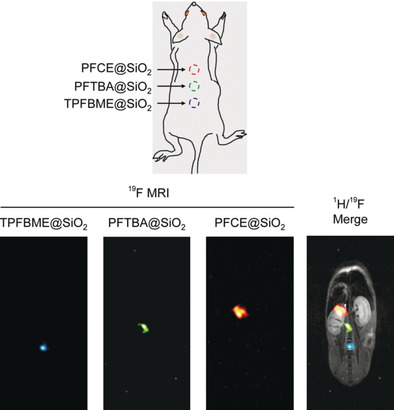
More colors for MRI: Perfluorocarbon-encapsulated silica nanoparticles, PFCE@SiO2, TPFBME@SiO2, and PFTBA@SiO2, that exhibit 19F NMR peaks with different chemical shifts were developed. These nanoprobes showed 19F MRI multiplexed signals in MR imaging of phantoms. Finally, 19F MR imaging with triple colors was achieved in a living mouse.
CO Chemistry
Functionalization of Carbon Monoxide and tert-Butyl Nitrile by Intramolecular Proton Transfer in a Bis(Phosphido) Thorium Complex
- Pages: 16748-16753
- First Published: 17 October 2018
Covalent Organic Frameworks
Covalent Organic Frameworks with Chirality Enriched by Biomolecules for Efficient Chiral Separation
- Pages: 16754-16759
- First Published: 25 October 2018

COF chirality: A general and efficient strategy has been developed to introduce chirality into covalent organic frameworks (COFs) by covalently immobilizing biomolecules into achiral COFs. The biomolecules⊂COFs can serve as chiral stationary phases for efficient chiral separation of a broad range of racemates.
Biocatalytic Retrosynthesis | Very Important Paper
Chemo-Enzymatic Synthesis of Pyrazines and Pyrroles
- Pages: 16760-16763
- First Published: 18 October 2018
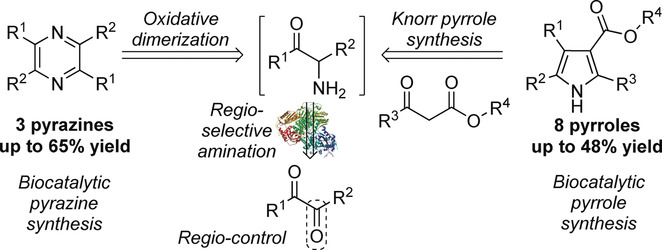
The key amination step of the ketone precursors in a biocatalytic synthesis of substituted pyrazines and pyrroles is mediated using a transaminase (ATA). Treatment of α-diketones with ATA-113 in the presence of an amine donor yielded α-amino ketones which underwent oxidative dimerization to the pyrazines. Selective amination of α-diketones in the presence of β-keto esters afforded substituted pyrroles in a biocatalytic equivalent of the classical Knorr pyrrole synthesis.
Photoresponsive Materials | Very Important Paper
Towards a Spectrally Customized Photoresponse from an Organic–Inorganic Hybrid Ferroelectric
- Pages: 16764-16767
- First Published: 25 October 2018
Metal Clusters
Bonding of Two 8-Electron Superatom Clusters
- Pages: 16768-16772
- First Published: 23 October 2018

Dimers are forever: Two crystallographic studies of the dimer of 8-electron superatom clusters: [Au2Ag42(SAdm)27]+ and [Au2Ag48(S-tBu)20(Dppm)6Br11]3+ enrich the understanding of metal superatom molecular clusters and suggest the possibility for further assembling metal superatom building blocks into higher order superatom molecules.
Active Motion
Ionic Janus Liquid Droplets Assembled and Propelled by Electric Field
- Pages: 16773-16776
- First Published: 31 October 2018

Particles in motion: Janus liquid droplets can be used as building blocks in an active propulsion system. Using an ionic liquid, the droplet system can be tuned from core–shell to Janus and multipatches by using surfactant-based methods. The approach was stimulated by the success of electrohydrodynamic flow produced by an alternating electric field to produce motion of colloidal particles; its usefulness to also propel ionic liquid droplets is demonstrated.
NMR Spectroscopy
Measuring Diffusion Constants of Invisible Protein Conformers by Triple-Quantum 1H CPMG Relaxation Dispersion
- Pages: 16777-16780
- First Published: 29 October 2018

Diffusion of the invisible state: A CPMG NMR spectroscopy experiment allows measurement of translational diffusion constants of protein excited states. The experiment exploits methyl 1H 3Q coherences and applies encode/decode gradients flanking a CPMG element so that heretofore unmeasurable hydrodynamic properties of invisible states can be obtained.
Photocatalysis
A Promising Application of Optical Hexagonal TaN in Photocatalytic Reactions
- Pages: 16781-16784
- First Published: 17 October 2018
RNA Modification
AlkAniline-Seq: Profiling of m7G and m3C RNA Modifications at Single Nucleotide Resolution
- Pages: 16785-16790
- First Published: 29 October 2018
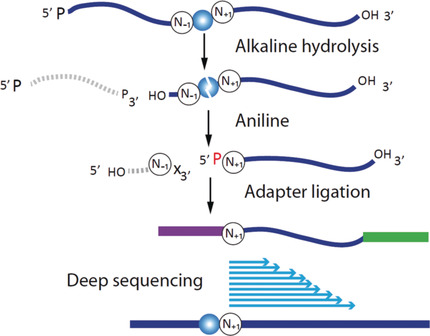
Deep sequencing was applied in a new concept of library preparation for detection of RNA modifications. Modified RNA is treated by alkaline hydrolysis, dephosphorylated, and subjected to aniline cleavage of abasic sites. The resulting 5′-phosphates in RNA are used for specific ligation of the sequencing adapter. The method can be applied for specific and sensitive detection of m7G, m3C, and (D) residues in RNAs.
Enantioselectivity | Hot Paper
Mesoporous Encapsulated Chiral Nanogold for Use in Enantioselective Reactions
- Pages: 16791-16795
- First Published: 29 October 2018

An enantioselective nanomaterial has been constructed. In the oxidation of chiral DOPA, the nanozyme with d/l-Cys shows preference to l/d-DOPA, respectively. Calculation of apparent steady-state kinetic parameters and activation energies together with molecular dynamics (MD) simulations showed that the different affinity precipitated by hydrogen bond formation between chiral Cys and DOPA is the origin of the chiral selectivity.
Hydrogen Evolution
Integration of Lanthanide–Transition-Metal Clusters onto CdS Surfaces for Photocatalytic Hydrogen Evolution
- Pages: 16796-16800
- First Published: 24 October 2018
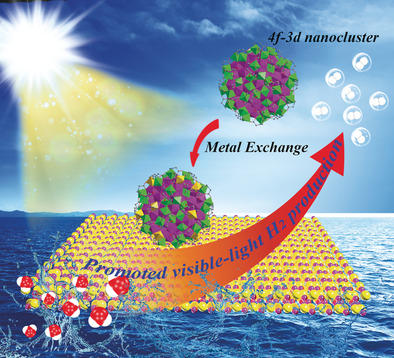
Assembling lanthanide–transition-metal (4f–3d) clusters Ln52Ni56 (Ln=Eu, Pr, Nd and Gd) onto CdS composites achieved enhanced photocatalytic H2 production. Some Ni2+ ions in the clusters were exchanged by Cd2+ to form Ln52Ni56−xCdx/CdS composites. An Eu52Ni56−xCdx/CdS species shows the highest activity of 25 353 μmol h−1 g−1 and an apparent quantum efficiency of 42.4 %.
Electrochemical Sensors | Hot Paper
Light-Addressable Ion Sensing for Real-Time Monitoring of Extracellular Potassium
- Pages: 16801-16805
- First Published: 05 November 2018
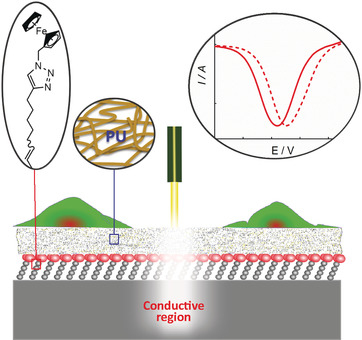
K+ sensing: A light-addressable electrochemical K+ sensor is introduced that consists of a thin polymer film containing an ionophore deposited on a semiconducting silicon electrode. Ferrocene is covalently attached to oxide-free silicon and the electrode exhibits surface confined electrochemistry under light illumination. The sensor exhibits a Nernstian response to [K+] in a light-defined spatial region. Changes in extracellular [K+] associated with living cells upon stimulation are monitored electrochemically.
Photodimerization
Catalyst- and Template-Free Ultrafast Visible-Light-Triggered Dimerization of Vinylpyridine-Functionalized Tetraarylaminoborane: Intriguing Deep-Blue Delayed Fluorescence
- Pages: 16806-16810
- First Published: 21 October 2018
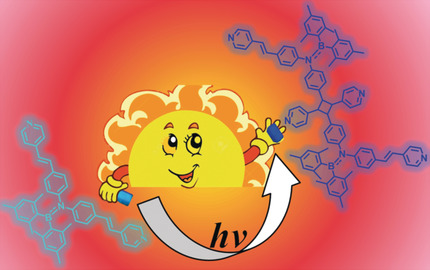
True blue: By utilizing BN/CC isosterism and topochemistry, visible-light-induced photodimerization of vinylpridine-appended tetraarylaminoborane (TAAB) was accomplished within a record low reaction time of 1 h without the need for a photoredox catalyst or template. Both the monomer and photodimer exhibit distinctive photophysical properties with deep-blue delayed fluorescence (DF) features in solution and in the solid state.
CO2 Photoreduction | Very Important Paper
Nickel Metal–Organic Framework Monolayers for Photoreduction of Diluted CO2: Metal-Node-Dependent Activity and Selectivity
- Pages: 16811-16815
- First Published: 06 November 2018
Gold Compounds
The Complex Coordination Landscape of a Digold(I) U-Shaped Metalloligand
- Pages: 16816-16820
- First Published: 31 October 2018
Materials Chemistry
Bromine-Substituted Fluorene: Molecular Structure, Br–Br Interactions, Room-Temperature Phosphorescence, and Tricolor Triboluminescence
- Pages: 16821-16826
- First Published: 29 October 2018

Color tuning: Crystals of the fluorene derivative BrFlu−CBr exhibit fluorescence-phosphorescence dual-emission upon introduction of a mechanical stimulus, without excitation by a UV lamp. Upon extended exposure to the mechanical stimulus, the triboluminescence emission changes from cyan to blue. After removal of the mechanical stimulus, green-white phosphorescence is observed.
Metal–Support Interactions | Hot Paper
Direct In Situ TEM Visualization and Insight into the Facet-Dependent Sintering Behaviors of Gold on TiO2
- Pages: 16827-16831
- First Published: 06 November 2018
Radical Chain Mechanism | Hot Paper
Metal-Free Radical Borylation of Alkyl and Aryl Iodides
- Pages: 16832-16836
- First Published: 17 October 2018
Radicals
Catalytic Radical Process for Enantioselective Amination of C(sp3)−H Bonds
- Pages: 16837-16841
- First Published: 22 October 2018

Radicals and Co: An enantioselective radical process has been established using cobalt(II)-based metalloradical catalysis (MRC) for stereoselective amination of aliphatic C−H bonds at room temperature to form chiral 1,3-diamines under neutral and non-oxidative conditions. The cobalt(II)-catalyzed C−H amination features an unusual degree of functional-group tolerance and chemoselectivity.
Carbocyclization
Efficient Palladium-Catalyzed Aerobic Arylative Carbocyclization of Enallenynes
- Pages: 16842-16846
- First Published: 23 October 2018

Co catalyst as co-catalyst: A PdII-catalyzed oxidative carbocyclization of the rational designed enallenynes using molecular oxygen is reported. By applying a bifunctional catalyst (Co(salophen)-HQ) as an efficient electron transfer mediator, enallenynes are effectively arylated to the corresponding six-membered carbocycles in good yields.
Synthetic Methods
Nitromethane as a Carbanion Source for Domino Benzoannulation with Ynones: One-Pot Synthesis of Polyfunctional Naphthalenes and a Total Synthesis of Macarpine
- Pages: 16847-16851
- First Published: 15 October 2018
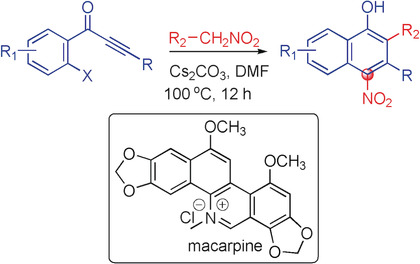
A one-pot, transition-metal-free, domino Michael/SNAr process was devised for the regioselective synthesis of polyfunctional naphthalenes by employing nitromethane and ortho-haloaryl ynones. Nitromethane was utilized as a one-carbon carbanion source that is incorporated into a variety of ynones, ending up as an aromatic nitro substituent. This reaction was used in the total synthesis of the polycyclic alkaloid macarpine.
Asymmetric Catalysis
Chiral Guanidine/Copper Catalyzed Asymmetric Azide-Alkyne Cycloaddition/[2+2] Cascade Reaction
- Pages: 16852-16856
- First Published: 24 October 2018
![Chiral Guanidine/Copper Catalyzed Asymmetric Azide-Alkyne Cycloaddition/[2+2] Cascade Reaction](/cms/asset/f68a534f-dad3-4720-86dd-7324878a31f3/anie201810679-toc-0001-m.jpg)
The ketenimine species generated in situ from sulfonyl azides and terminal alkynes were trapped by the chiral guanidine/CuI complex and followed by a [2+2] reaction, which afforded various spiro-azetidinimine oxindoles in good yields and excellent stereoselectivities. Control experiments and X-ray crystallography were used to probe into the interaction of the chiral guanidinium salt with the copper salt.
Synthetic Methods
Nickel-Catalyzed Mizoroki–Heck-Type Reactions of Unactivated Alkyl Bromides
- Pages: 16857-16860
- First Published: 24 October 2018

A mild and general, nickel-catalyzed Mizoroki–Heck reaction of unactivated alkyl bromides is described. The reaction proceeds efficiently using a wide range of primary and secondary alkyl bromides, and examples of intermolecular cross-couplings are provided. Alkene regioselectivity is significantly enhanced over prior carbocyclizations using palladium catalysis, and mechanistic investigations are consistent with a direct carbocyclization.
C−C Borylation
Mild Ring-Opening 1,3-Hydroborations of Non-Activated Cyclopropanes
- Pages: 16861-16865
- First Published: 29 October 2018

A mild three-component system was developed for the preparation of alkylboronic esters by ring-opening 1,3-hydroborations of non-activated cyclopropanes. This method has good functional group compatibility and can serve as a powerful synthetic tool for late-stage borylative ring-opening of cyclopropanes in complex compounds.
Expanded Porphyrins
Inversion Triggered by Protonation—A Rubyrin with Embedded α,β′-Pyridine Moieties
- Pages: 16866-16870
- First Published: 29 October 2018

Controlling confusion: Incorporation of α,β′-pyridine into a [26]hexaphyrin (1.1.0.1.1.0) frame afforded 29,33-diaza-A,D-di-p-benzi[26]hexaphyrin, which was shown to have a 26-electron π-delocalized structure. A stepwise protonation of pyridine moieties resulted in N-confused or doubly N-confused conformers of the original macrocyclic frame.
Difluoromethylation
Palladium-Catalyzed Decarbonylative Difluoromethylation of Acid Chlorides at Room Temperature
- Pages: 16871-16876
- First Published: 24 October 2018

A palladium-catalyzed decarbonylative cross-coupling reaction of acid chlorides with a difluoromethyl zinc reagent allows access to difluoromethylated compounds. The transformation proceeds at room temperature and shows broad functional group tolerance, thus providing a general and efficient method for decarbonylative difluoromethylation of a wide range of aromatic carboxylic acids.
Adsorption Energies
Bond Energies of Adsorbed Intermediates to Metal Surfaces: Correlation with Hydrogen–Ligand and Hydrogen–Surface Bond Energies and Electronegativities
- Pages: 16877-16881
- First Published: 23 October 2018
Photoanodes | Very Important Paper
Simultaneous Manipulation of O-Doping and Metal Vacancy in Atomically Thin Zn10In16S34 Nanosheet Arrays toward Improved Photoelectrochemical Performance
- Pages: 16882-16887
- First Published: 29 October 2018
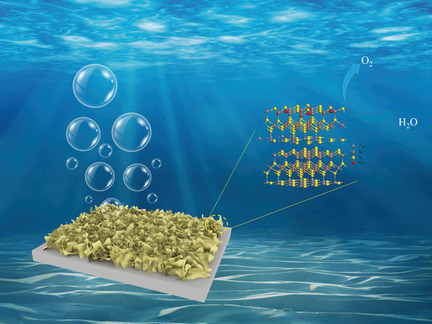
Zn10In16S34 atomically thin nanosheet arrays were synthesized and their photoelectrochemical water splitting activities studied. Performance enhancement was attributed to the fast photoexcited electron–hole pair separation, decreased surface transfer impedance, prolonged carrier lifetime, and reduced overpotential of the oxygen evolution reaction.
Switchable Polymerization | Hot Paper
One-Step Access to Sequence-Controlled Block Copolymers by Self-Switchable Organocatalytic Multicomponent Polymerization
- Pages: 16888-16892
- First Published: 11 November 2018
Polymers
Switch Catalysis To Deliver Multi-Block Polyesters from Mixtures of Propene Oxide, Lactide, and Phthalic Anhydride
- Pages: 16893-16897
- First Published: 29 October 2018
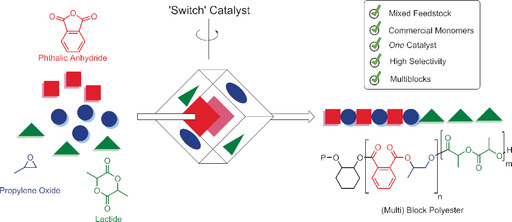
Mixtures of three commercial monomers, produced and used at large scale in existing polymer manufacturing, were applied in a switchable catalytic process to deliver new multi-block polyesters. The aluminium catalyst delivers polymers of 3, 7, 11, 15, 19, 23, and 27 block units with outstanding selectivity.
Carbocatalysts
Biomass-Derived Graphene-like Carbon: Efficient Metal-Free Carbocatalysts for Epoxidation
- Pages: 16898-16902
- First Published: 26 October 2018

N-doped graphene-like layered carbon (NG) could be synthesized by a metal-free pyrolysis route from glucose, fructose, and 5-HMF, which are widely available biomass or biomass derivatives. A well-developed thin-layer structure with large lateral dimensions could be observed for 5-HMF-derived NG, which could be used as a metal-free catalyst in alkene epoxidation.
Trifluoromethyltellurolation | Very Important Paper
Chemoselective Pd-Catalyzed C-TeCF3 Coupling of Aryl Iodides
- Pages: 16903-16906
- First Published: 22 October 2018
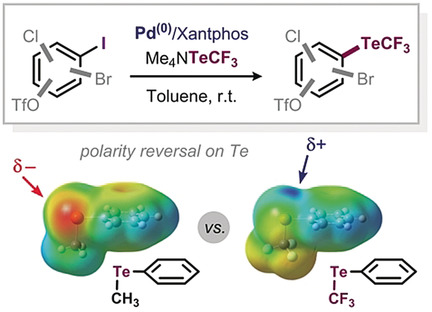
Te time: The first direct catalytic method for the formation of C(sp2)−TeCF3 bonds has been developed. It relies on a Pd/Xantphos catalytic system and allows for the trifluoromethylellurolation of aryl iodides. Computational and experimental mechanistic analyses shed light on the privileged activity of Xantphos in this transformation.





